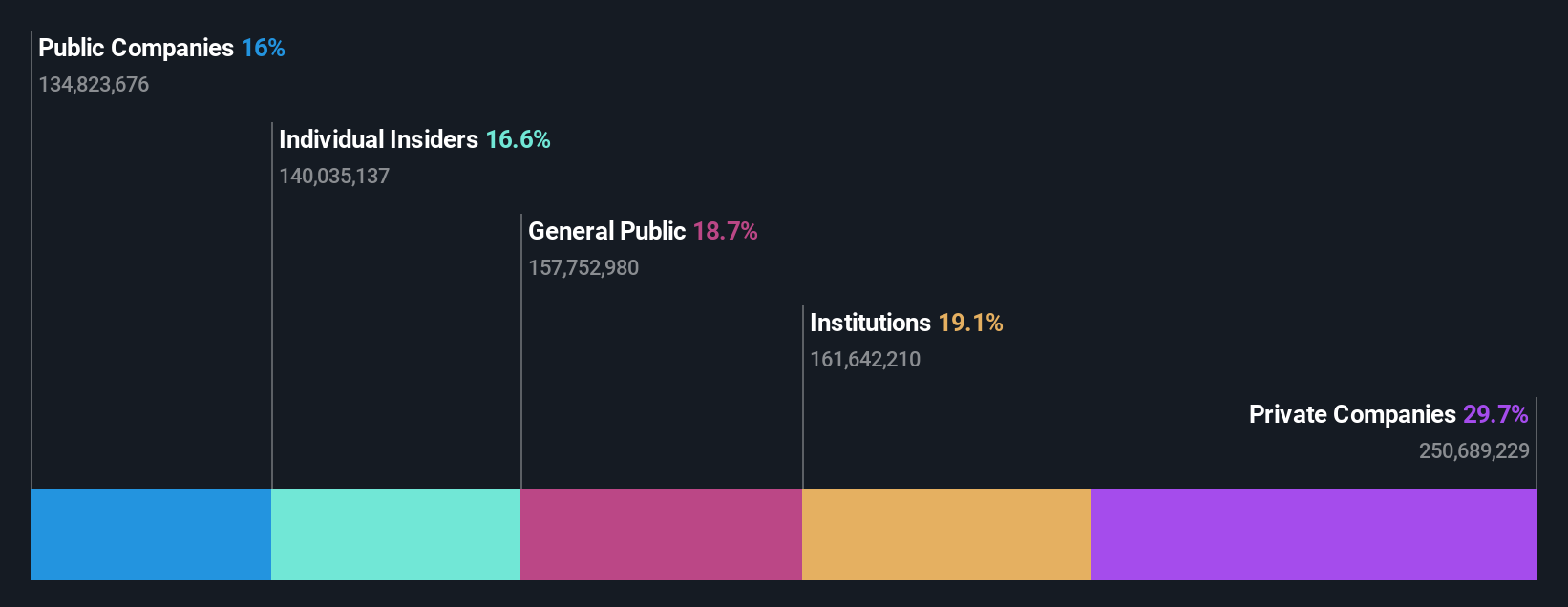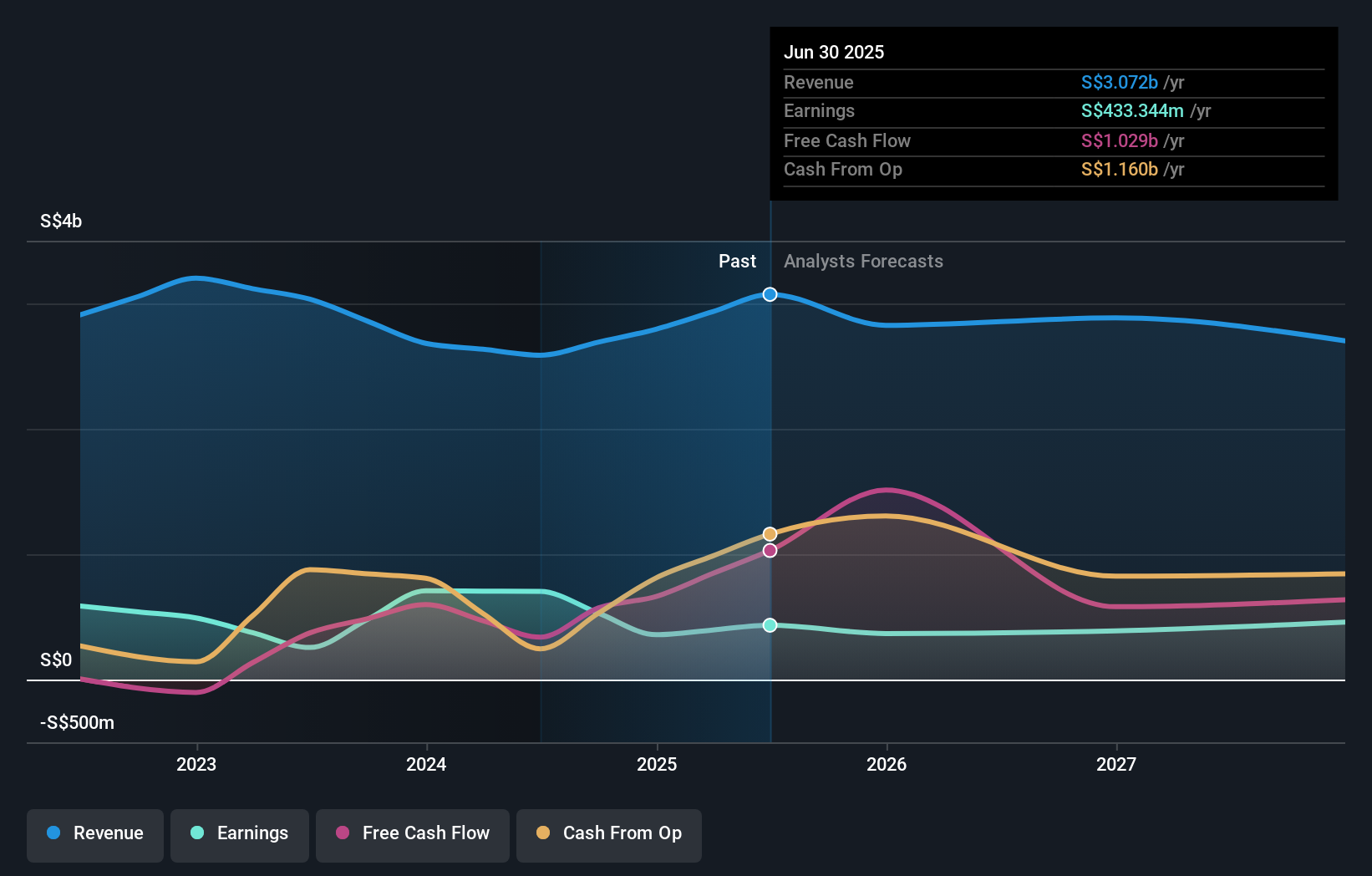- Singapore
- /
- Real Estate
- /
- SGX:U14
Institutions profited after UOL Group Limited's (SGX:U14) market cap rose S$372m last week but private companies profited the most
Key Insights
- The considerable ownership by private companies in UOL Group indicates that they collectively have a greater say in management and business strategy
- The top 4 shareholders own 54% of the company
- Insiders own 17% of UOL Group
If you want to know who really controls UOL Group Limited (SGX:U14), then you'll have to look at the makeup of its share registry. With 30% stake, private companies possess the maximum shares in the company. That is, the group stands to benefit the most if the stock rises (or lose the most if there is a downturn).
While private companies were the group that benefitted the most from last week’s S$372m market cap gain, institutions too had a 19% share in those profits.
In the chart below, we zoom in on the different ownership groups of UOL Group.
View our latest analysis for UOL Group

What Does The Institutional Ownership Tell Us About UOL Group?
Many institutions measure their performance against an index that approximates the local market. So they usually pay more attention to companies that are included in major indices.
UOL Group already has institutions on the share registry. Indeed, they own a respectable stake in the company. This implies the analysts working for those institutions have looked at the stock and they like it. But just like anyone else, they could be wrong. If multiple institutions change their view on a stock at the same time, you could see the share price drop fast. It's therefore worth looking at UOL Group's earnings history below. Of course, the future is what really matters.

We note that hedge funds don't have a meaningful investment in UOL Group. Our data shows that Ee Lim Wee is the largest shareholder with 16% of shares outstanding. For context, the second largest shareholder holds about 16% of the shares outstanding, followed by an ownership of 14% by the third-largest shareholder.
Our research also brought to light the fact that roughly 54% of the company is controlled by the top 4 shareholders suggesting that these owners wield significant influence on the business.
Researching institutional ownership is a good way to gauge and filter a stock's expected performance. The same can be achieved by studying analyst sentiments. There are a reasonable number of analysts covering the stock, so it might be useful to find out their aggregate view on the future.
Insider Ownership Of UOL Group
The definition of company insiders can be subjective and does vary between jurisdictions. Our data reflects individual insiders, capturing board members at the very least. Company management run the business, but the CEO will answer to the board, even if he or she is a member of it.
I generally consider insider ownership to be a good thing. However, on some occasions it makes it more difficult for other shareholders to hold the board accountable for decisions.
It seems insiders own a significant proportion of UOL Group Limited. It has a market capitalization of just S$6.5b, and insiders have S$1.1b worth of shares in their own names. That's quite significant. Most would be pleased to see the board is investing alongside them. You may wish to access this free chart showing recent trading by insiders.
General Public Ownership
With a 19% ownership, the general public, mostly comprising of individual investors, have some degree of sway over UOL Group. This size of ownership, while considerable, may not be enough to change company policy if the decision is not in sync with other large shareholders.
Private Company Ownership
It seems that Private Companies own 30%, of the UOL Group stock. It might be worth looking deeper into this. If related parties, such as insiders, have an interest in one of these private companies, that should be disclosed in the annual report. Private companies may also have a strategic interest in the company.
Public Company Ownership
It appears to us that public companies own 16% of UOL Group. We can't be certain but it is quite possible this is a strategic stake. The businesses may be similar, or work together.
Next Steps:
While it is well worth considering the different groups that own a company, there are other factors that are even more important. For example, we've discovered 2 warning signs for UOL Group (1 is significant!) that you should be aware of before investing here.
But ultimately it is the future, not the past, that will determine how well the owners of this business will do. Therefore we think it advisable to take a look at this free report showing whether analysts are predicting a brighter future.
NB: Figures in this article are calculated using data from the last twelve months, which refer to the 12-month period ending on the last date of the month the financial statement is dated. This may not be consistent with full year annual report figures.
New: AI Stock Screener & Alerts
Our new AI Stock Screener scans the market every day to uncover opportunities.
• Dividend Powerhouses (3%+ Yield)
• Undervalued Small Caps with Insider Buying
• High growth Tech and AI Companies
Or build your own from over 50 metrics.
Have feedback on this article? Concerned about the content? Get in touch with us directly. Alternatively, email editorial-team (at) simplywallst.com.
This article by Simply Wall St is general in nature. We provide commentary based on historical data and analyst forecasts only using an unbiased methodology and our articles are not intended to be financial advice. It does not constitute a recommendation to buy or sell any stock, and does not take account of your objectives, or your financial situation. We aim to bring you long-term focused analysis driven by fundamental data. Note that our analysis may not factor in the latest price-sensitive company announcements or qualitative material. Simply Wall St has no position in any stocks mentioned.
About SGX:U14
UOL Group
UOL Group Limited (UOL) is a leading Singapore-listed property and hospitality group with total assets of about $23 billion.
Excellent balance sheet, good value and pays a dividend.
Similar Companies
Market Insights
Community Narratives



